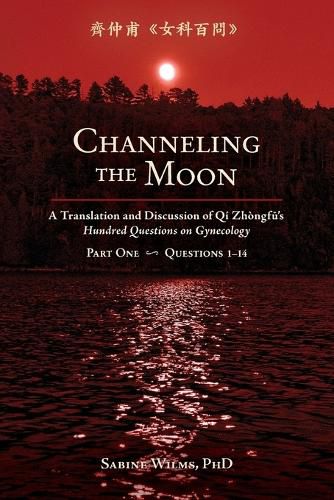Readings Newsletter
Become a Readings Member to make your shopping experience even easier.
Sign in or sign up for free!
You’re not far away from qualifying for FREE standard shipping within Australia
You’ve qualified for FREE standard shipping within Australia
The cart is loading…






This title is printed to order. This book may have been self-published. If so, we cannot guarantee the quality of the content. In the main most books will have gone through the editing process however some may not. We therefore suggest that you be aware of this before ordering this book. If in doubt check either the author or publisher’s details as we are unable to accept any returns unless they are faulty. Please contact us if you have any questions.
In the heyday of classical Chinese gynecology roughly eight centuries ago, Qi Zhongfu
composed a humbly named masterpiece, to address his students’, colleagues’, and patients’ Hundred Questions on Gynecology. Quoting and discussing all the major theories and treatments found in earlier gynecological texts, the Chinese original of this book must have been as useful to his Song dynasty readers as this modern English translation will be for any practitioner of Chinese gynecology today.
One of the eminent translators of Chinese medical literature, Dr. Sabine Wilms has once again crafted a meticulously researched, lovingly phrased, and abundantly annotated translation in an attractive and accessible edition that is sure to inspire our clinical colleagues and set a new bar for the clinical practice of traditional Chinese gynecology in the West.
Features:
Nu Ke Bai Wen
( Hundred Questions on Gynecology, published in 1220 CE) on theoretical foundations and menstrual conditions, with the Chinese text side-by-side with the English translation;
- Extensive commentaries by Sabine Wilms on the essays and formulas, to discuss treatment strategies, related formulas, textual variants, grammatical issues, historical developments, technical terms, and contemporary relevance, and include abundant quotations from relevant medical texts, with Chinese sources for important passages;
- Character-Pinyin-English cross-listed tables for formulas and medicinal ingredients, in alphabetical order of Pinyin to English and of English to Pinyin;
- General index.
$9.00 standard shipping within Australia
FREE standard shipping within Australia for orders over $100.00
Express & International shipping calculated at checkout
This title is printed to order. This book may have been self-published. If so, we cannot guarantee the quality of the content. In the main most books will have gone through the editing process however some may not. We therefore suggest that you be aware of this before ordering this book. If in doubt check either the author or publisher’s details as we are unable to accept any returns unless they are faulty. Please contact us if you have any questions.
In the heyday of classical Chinese gynecology roughly eight centuries ago, Qi Zhongfu
composed a humbly named masterpiece, to address his students’, colleagues’, and patients’ Hundred Questions on Gynecology. Quoting and discussing all the major theories and treatments found in earlier gynecological texts, the Chinese original of this book must have been as useful to his Song dynasty readers as this modern English translation will be for any practitioner of Chinese gynecology today.
One of the eminent translators of Chinese medical literature, Dr. Sabine Wilms has once again crafted a meticulously researched, lovingly phrased, and abundantly annotated translation in an attractive and accessible edition that is sure to inspire our clinical colleagues and set a new bar for the clinical practice of traditional Chinese gynecology in the West.
Features:
Nu Ke Bai Wen
( Hundred Questions on Gynecology, published in 1220 CE) on theoretical foundations and menstrual conditions, with the Chinese text side-by-side with the English translation;
- Extensive commentaries by Sabine Wilms on the essays and formulas, to discuss treatment strategies, related formulas, textual variants, grammatical issues, historical developments, technical terms, and contemporary relevance, and include abundant quotations from relevant medical texts, with Chinese sources for important passages;
- Character-Pinyin-English cross-listed tables for formulas and medicinal ingredients, in alphabetical order of Pinyin to English and of English to Pinyin;
- General index.